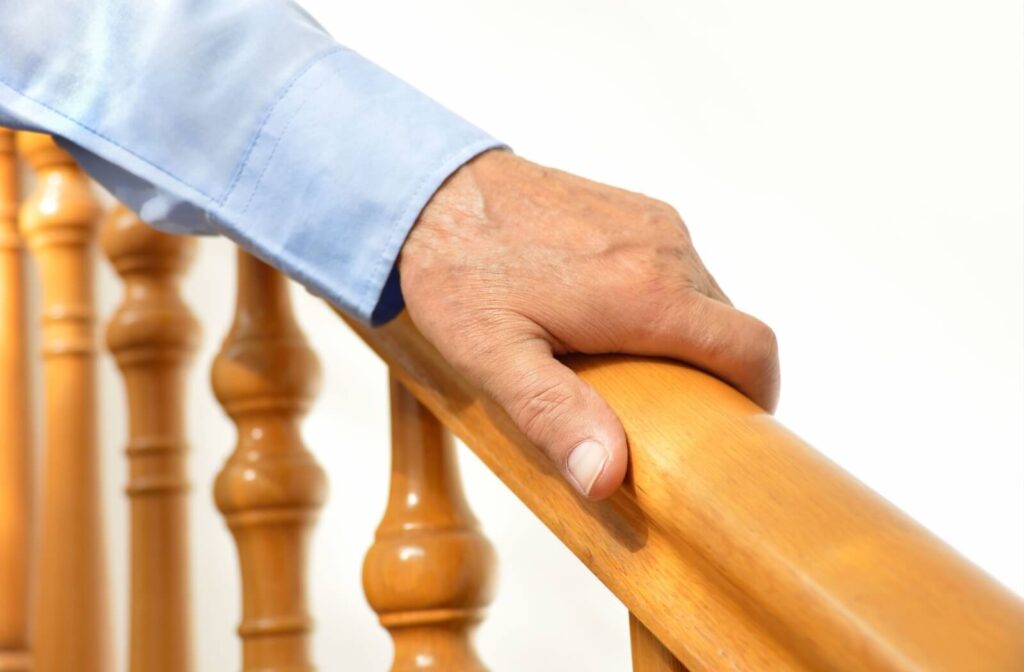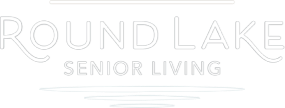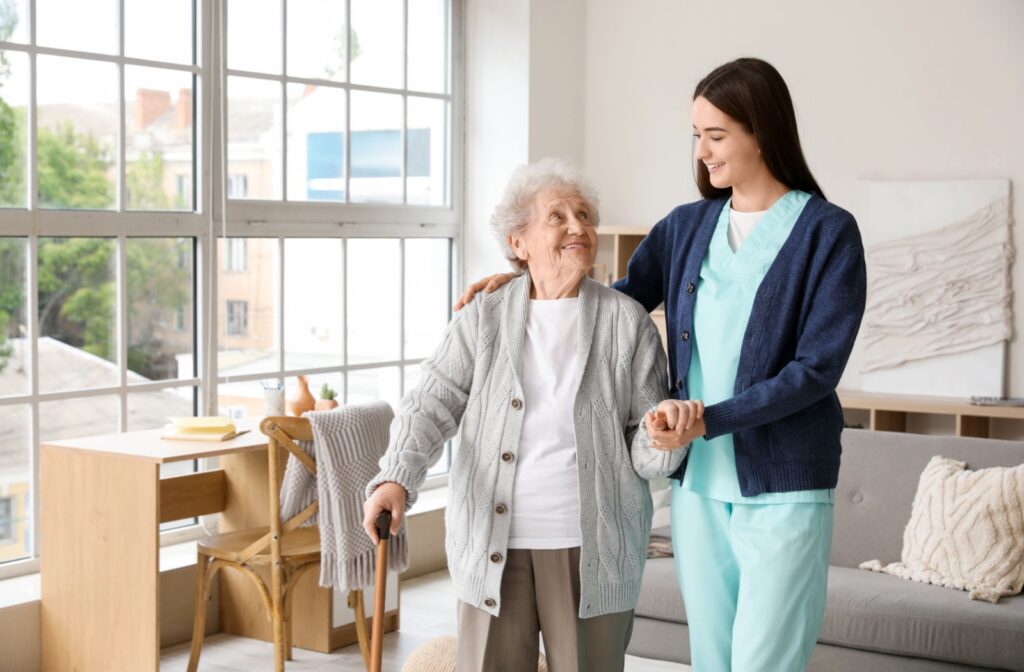Key Takeaways
- Assisted living communities reduce fall risks while supporting independence.
- Common fall risks include poor lighting, loose rugs, and cluttered walkways.
- Professional support and thoughtful design features, like grab bars and non-slip flooring, help keep residents safe.
- Proactive strategies include regular safety checks, supportive footwear, and tailored exercise programs.
- Advanced monitoring technology that enhances safety with real-time alerts and faster response times.
- Ongoing health monitoring and coordinated care address changes before they lead to problems.
Fall Prevention in Senior Living
You want your loved one to maintain their independence while staying safe. However, the reality of aging at home can present increasing challenges. Falls become more common as we age, and they can change a person’s balance, mobility, and overall well-being.
One of the many benefits of assisted living is the comprehensive safety features. Assisted living communities offer safety measures and professional support that significantly reduce fall risks while preserving dignity and independence. This helps your loved one stay independent, just like they deserve.
Understanding Fall Risks for Seniors
As we age, certain changes can make daily life feel a bit less steady. Adjustments in vision, balance, muscle strength, and reaction time affect how seniors move through routines. Some medications can also impact coordination and alertness. The first step towards keeping someone safe is understanding what risk factors they face every day.
Common Risk Factors at Home
Home environments often contain hidden hazards that increase fall risks for seniors. These are easy to overlook—especially if you don’t know what to look for. They include:
- Loose rugs
- Poor lighting
- Cluttered walkways
- Unsecured rugs
Without modifications, even familiar spaces can become dangerous.
Impact of Falls on Independence
A fall can do more than cause physical harm. It may also affect a person’s sense of security and independence. Worrying about falling sometimes leads to less movement, which can weaken muscles and raise future fall risks. Over time, this can have a significant impact on a person’s quality of life.
How Assisted Living Communities Improve Safety
Professional senior living communities create environments specifically designed to reduce fall risks. These communities combine thoughtful design with trained staff who understand the unique needs of older adults. Every aspect of the environment is considered from a safety perspective.
Round-the-Clock Professional Support
Trained caregivers are available around the clock to provide assistance when needed and monitor residents’ well-being. This doesn’t mean constant supervision—it means help is immediately available if situations arise. Caregivers are also trained in fall prevention and can quickly respond to emergencies.
Senior-Friendly Design Features
Communities feature safety elements throughout, including grab bars in bathrooms, well-placed lighting, and non-slip flooring. Emergency call systems are present in every room, and wide hallways are easy to navigate with mobility aids. These features blend seamlessly into a welcoming, homelike environment.
Active Social Engagement
Staying active and connected is a big part of daily life. Regular events, exercise classes, and group activities support both physical wellness and social connection. Group fitness programs also help residents preserve balance and strength to navigate their daily lives.
Proactive Fall Prevention Strategies
Fall prevention means more than simply removing hazards. It’s about creating a safer environment through thoughtful planning and ongoing support.
Environmental Safety Modifications
Communities routinely review and update their surroundings to help reduce risks before problems arise. This includes providing plenty of lighting, securing or removing loose rugs, and keeping walkways clear. Regular safety checks also make it easy to spot and address any new concerns quickly.
Proper Footwear and Mobility Support
Team members help residents select footwear that offers support and good traction, which reduces the risk of slips. Walkers and canes are available as needed, and each mobility aid is fitted and maintained to provide reliable support.
Tailored Exercise and Physical Therapy
Balance and strength programs are designed with residents’ abilities in mind. They focus on coordination, flexibility, and building muscle. Physical therapy services are available to address individual needs and support personalized exercise routines. Regular balance activities help residents stay steady and confident throughout their day.

Benefits of Professional Health Monitoring
One of the most significant advantages of life in assisted living is the regular monitoring. Caregivers constantly check in on residents to look for any changes. They’re trained to notice subtle shifts in mobility, balance, and cognitive habits over time. This proactive approach allows for early intervention and prevention strategies.
Electronic Safety Monitoring Systems
At Round Lake Senior Living, we combine innovation with compassionate care to help residents stay safe, supported, and confident in their independence. We use advanced tools like SafelyYou Fall Protection software, which leverages AI-powered monitoring and silent alert systems to detect potential incidents and notify caregivers without startling residents.
Motion sensors and smart lighting systems also help our team recognize when someone is awake, needs assistance, or is moving around at night. Together, these technologies enable faster response times, reducing the risk of serious injuries and unnecessary hospital visits.
Regular Health Assessments
Routine evaluations keep track of vision, balance, medication effects, and overall health. These regular check-ins allow care teams to adjust safety plans and address any concerns if they arise. This helps catch problems before they affect your loved one, not after.
Coordinated Care Approach
Care teams collaborate closely with healthcare providers to address factors that could contribute to falls. Whether it’s a change in medication, vision, or balance, open communication ensures that residents receive thoughtful, well-rounded care. This coordinated approach supports each resident’s safety and well-being.
Schedule Your Community Tour Today
At Round Lake Senior Living, we know that safety and independence don’t have to be mutually exclusive. Our community combines comprehensive safety features with warm, supportive care that honors each resident’s individuality.
This means your loved one can live the life they love here, and they’ll always have what they need to stay safe. Schedule a tour with us today to see for yourself!



